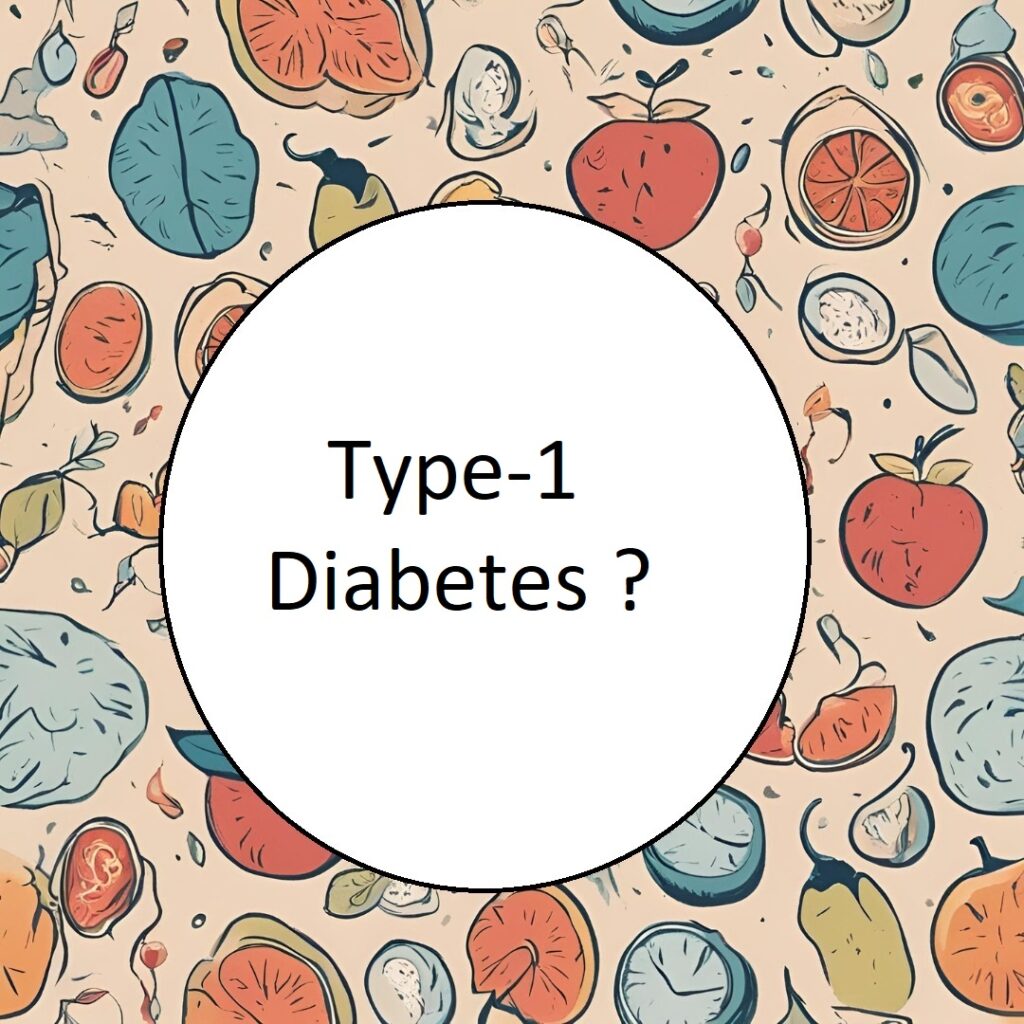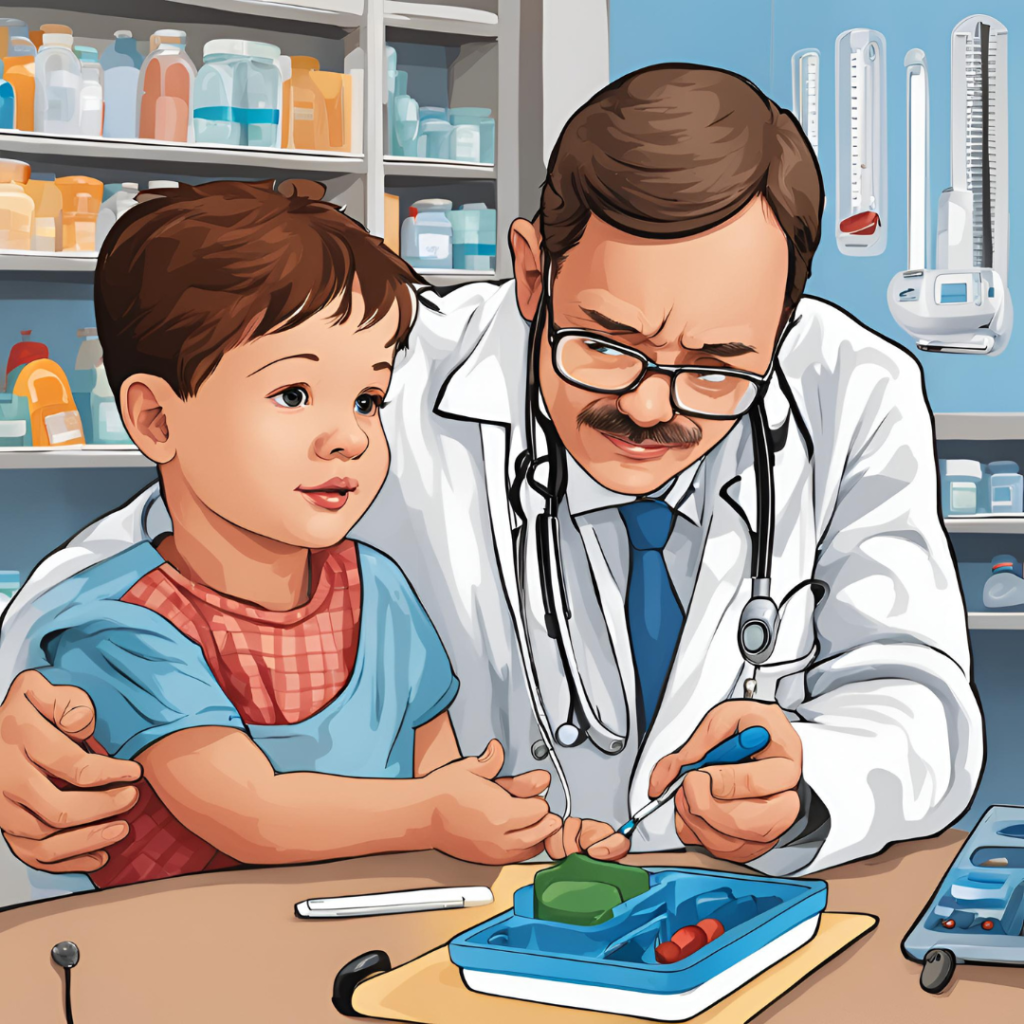According to CDC data, 304,000 children have been diagnosed with type 1 diabetes in 2021.

What is diabetes type 1?
In type 1 diabetes, our own auto-immunity system mistakenly kills beta cells. When beta cells start functioning and 80% remain then diabetes starts because there is not enough insulin in the body to control glucose. A lot of studies have been done on why antibodies that kill beta cells are formed in the body, but the exact reason has not been revealed yet.
How does diabetes occur?
Diabetes is a metabolic disorder in which our glucose levels increase and the system for converting glucose stops. The system in which glucose is used by cells gets broken down. Insulin works to send glucose into the cells. Insulin is a hormone that works to produce beta cells in our pancreas. When beta cells produce insulin, insulin works to send glucose to cells and muscles, due to which the body’s metabolism remains normal. According to CDC data, 304,000 children have been diagnosed with type 1 diabetes in 2021.
Who Can Get Type-1 Diabetes ?
Type 1 diabetes mostly develops in young children. Type 1 diabetes can develop anytime from age 1 to adolescence. Its symptoms are very shocking such as weight loss, even if the child eats well, the weight still reduces. If a child starts urinating more in bed at night, it could be a symptom of type 1 diabetes.
Symptoms of Type-1 Diabetes
Excessive thirst and frequent dry throat can also be symptoms. When sugar increases too much, ketones are formed in the blood. When ketones are formed, vomiting, stomach ache and urine start smelling like fruit. If such symptoms start appearing then understand that it is a medical emergency. In such a situation, the child has to be immediately admitted to the hospital and IV fluids have to be given and insulin treatment can be started immediately.
What tests should be done when symptoms of type 1 diabetes appear?
When symptoms of type-1 diabetes appear, we can do multiple tests such as fasting glucose test, post prandial glucose test.
HbA1C Test
HbA1C test can tell us the average glucose level of the last three months Normal glucose level should be 5.7 but in children suffering from Type 1, this level ranges from 10 to 15.
C Peptide Level Test
C peptide level test is considered an important test in type-1 diabetes. C peptide level test tells us the level of insulin. If the insulin level has decreased then it means that insulin will have to be given externally or methods of increasing insulin will have to be adopted.
Antibody Test
In type-1 diabetes, our own immune system develops antibodies that kill the patient’s beta cells, due to which the beta cells that send insulin to the body are reduced. Antibody test tells us that antibodies have been produced in our body, or not. Antibody test helps in identifying type-1 diabetes so that we can start treatment immediately. Antibody test is a more expensive test but it helps in diagnosing type 1 diabetes quickly.
After Being Diagnosed with Type-1 Diabetes ?
If your child has been diagnosed with type 1 diabetes, do not panic. Immediately consult a doctor and start treatment. In most cases, doctors may advise you to start insulin therapy.

Insulin Therapy is Dangerous?
Most people get scared after hearing the name Insulin therapy but it is not so. Insulin treatment is considered the safest treatment for type 1 diabetes. If someone tells you that type 1 diabetes can be treated without insulin treatment, then definitely express your doubt to them. Because the research till now has found that type 1 diabetes cannot be treated without insulin.
Insulin Dose
Insulin has to be administered once during the day before meals and the second dose at night before sleeping. The amount of insulin may change as time passes. It has been seen that in some months the quantity of insulin has to be taken less.
The amount of insulin dose is determined by how much glucose is in the blood. It is very important to monitor glucose through finger prick so that we can know how much insulin to give. Now do you know whether type-1 diabetes is more dangerous or type-2? So the answer is that both diabetes are not dangerous. There is danger when sugar is not controlled, if sugar is under control then there is nothing to fear.
Type-1 Diabetes Diet Plan
Since insulin is very important in type-1 diabetes, we have to take care of the diet plan. Due to the external source of insulin, two types of patients are seen:
1) those that have lost weight and
2) those who have gained weight.
There are three main types of food we eat.
1. Fat from which fatty acids are formed in the body.
2. Amino acids are formed in the body from protein and
3. Carbohydrates which are converted into glucose in the body.
If we have to stay away from sugar in diabetes, we do not need carbohydrates. If we want to stay away from sugar, we will have to take carbohydrates in less quantity as this produces sugar in the body. If the amount of insulin is too much then more insulin has to be taken. Taking too much insulin creates insulin resistance, which causes weight gain. If the patient’s weight is 23 BMI (Bobby Weight Index) then it is fine but if it is more than it is a matter of concern.
What Should be the Diet of Overweight Type-1 Diabetic Patients?
The patient should eat fewer grains. Of fruits and vegetables, eat 25% fruits which will provide energy (glucose) and 75% should be vegetables, both of these will provide us with vitamins, minerals, and micro nutrients and for protein sources we should eat cheese, eggs, chicken, and meat products.
What should be the Diet of Underweight Type-1 Diabetic Patients?
If insulin in the body is very low then the patient loses weight. Insulin is a supporting hormone in the body which works for growth. When insulin is in excess then it is natural to gain weight. What kind of diet should be given to such a patient?
Such patients should eat grains, pulses and starchy vegetables. Remember; do not take direct sources of glucose like sugar. Vegetables and fruits: Eat 50% fruits and 50% starchy vegetables and for sources of protein, you can take eggs, cheese, eggs, chicken, and meat products, which will increase weight and also increase insulin.
We hope you have benefited from the information, stay healthy.
This information is written by
Mr Suhas Dadarao Avhad
Author and CEO (www.usahealthy.net)

